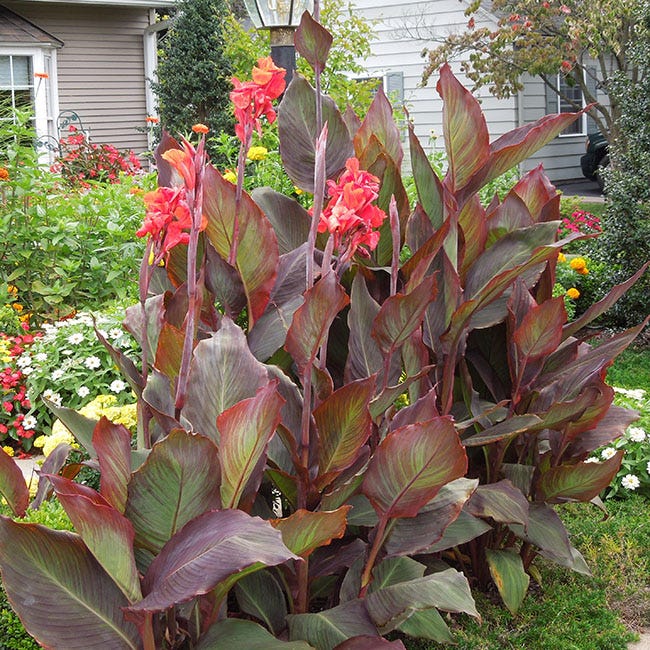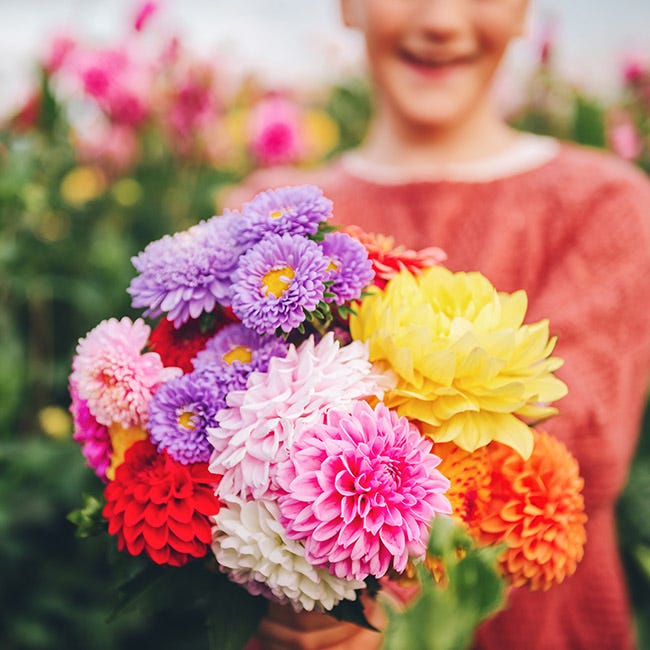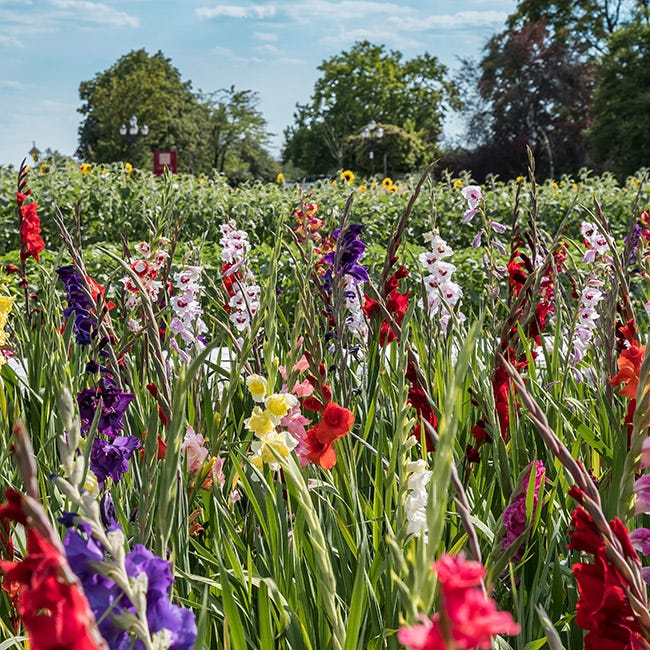Caring For Your Summer Blooming Bulbs
Picking out the types and colors of summer blooming bulbs is the fun part! Keeping them happy and thriving is the hard part but it doesn’t have to be. In fact, with a few easy tips, you can have beautiful summer blooming bulbs that last for an entire season.
Fertilize
When growing summer blooming bulbs it's important to give them the specific nutrients they need. Since they all require different fertilizing needs as an overview its best to fertilize in late spring. Be careful not to over fertilize, as you will get beautiful green foliage plants but no blossoms. We recommend an organic fertilizer that is slow releasing. Apply fertilizer to the soil when planting and re- apply around the plant to prevent burning.
How To Encourage Growth & Blooms
We went into specifics below on how to encourage growth and blossoms for the most common summer blooming bulbs.
Calla Lilies
Before planting calla lily bulbs mix a 20-20-20 fertilizer (or as similar as possible) in the soil. Once planted, fertilize as the plant breaks the ground, and re-apply every 2 weeks for 8 weeks. Once it starts blooming stop fertilizing. If the leaves on the plant have very dark tips, cut back on the fertilizer. Add coffee grounds between fertilizing rounds around the base of the plants to encourage growth. Calla lilies like acidic soil and coffee grounds add acidity.
Canna Lilies
When planting Canna lily rhizomes into a garden or container add 12-4-8 fertilizer to the soil. (Check fertilizer for instructions on amounts). Make sure to mix fertilizer into the soil and then add plants. Fertilize once a month beginning one month after planting. Once Canna Lilies are established add 5-10-5 fertilizer to the soil until late summer. Fertilizing to late in the summer encourages tender new growth that is more susceptible to cold damage.
Caladiums
Caladiums don't require any special growing fertilizer when they are first planted. Once they are established and growing, fertilize every four to six weeks throughout the growing season with 5-10-10 fertilizer. To prevent burning try not to place fertilizer on the leaves of the caladiums.
Dahlias
Dahlias tubers are easy to grow and to take care of. Plant dahlia tubers with bone meal. Make sure to mix the bone meal into the soil before planting the tuber. Once dahlias are planted, and the first flower bud appears on the plant, apply a low nitrogen fertilizer (5-10-10) to soil. Usually within 30 days of being planted. One application of fertilizer is usually adequate if the plants are in rich, fast draining soil.
Gladiolus
When planting gladiolus bulbs mix a 5-10-10 or 5-10-5 fertilizer to the soil. Before planting the corms, put a layer of non fertilizer soil with the bulb. Once the gladiolus start to grow, apply granular fertilizer to the base of the plants. Once they start to bloom, there is no need to fertilize anymore. Its important to read how much fertilizer to apply and how frequently.
Lily Bulbs
Plant Lily bulbs in the garden or in containers. Plant bulbs with a top dressing of slow release fertilizer like fish emulsion, worm castings and or compost tea to promote growth. Once growing and buds appear on the lily, feed with high phosphorus food, or bone meal to encourage long lasting and larger blooms. Fertilize in limited amounts, as to much fertilize will have the opposite effect and cause less blooms and green foliage.
Get The Look & Promote Endless Blooms
To promote your Dahlia to bloom more, it requires some trimming. This technique is called “deadheading.” This simple pinching technique is used to discard older blooms that have passed. You can use your fingers to gently pinch off older flowers, or if you prefer to cut the dead materials you can use floral snips.
The best way to deadhead summer blooming bulbs is to cut the old blossoms close to the plant's newest growth. By trimming out the old blossoms, it tells the plant to stop sending energy to the dead blossom, and it will promote new buds to appear.
Dahlias, Begonias, Cannas, and Callas are all summer blooming bulbs that require deadheading.
Water as Needed
Summer blooming bulbs require all different levels of watering needs. Some plants will give warning signs if they need more or less water.
Some of the sign are: If a summer blooming plant is lacking water, the ends of its leaves will start to show a brown crispy edge and may turn yellow. To little water for plants means its not getting the nutrients it needs from the water or soil. Some plants won’t flower as vibrant or as long if under watered. If a plant goes limp and some of the foliage is slimy, it is a sign its being over watered.
Some summer blooming plants examples of water needs are: Begonias and Caladiums need the perfect mix, not flooded or bone dry. Canna Lilies grow the best with a good supply of water.
Give Support
After all this hard work, the last thing you want to have happen, is to loose all the beautiful blooms you have worked so hard for!
Some summer blooming bulbs like dinner plate dahlias and gladiolus could use some support. Place a stake or a type of support trellis near the plant and tie up with non abrasive twine to prop weaker stems. This allows plants to keep blooming and to grow strength to support themselves.
With all these tips and guidance, we hope to see you out in the garden or relaxing enjoying your blooms!




